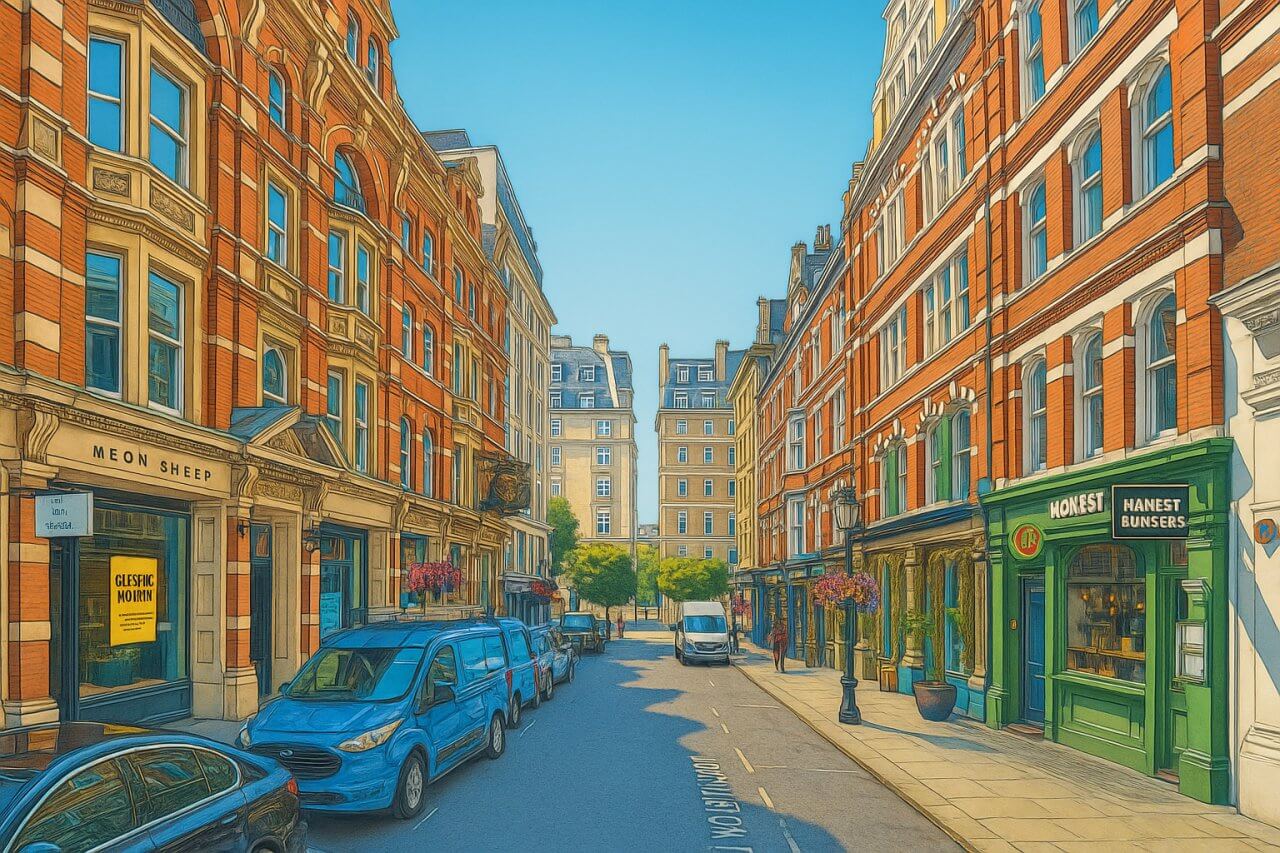
Southampton Street, London
Southampton Street is a short yet historically significant thoroughfare in the City of Westminster, part of central London. Situated in the vibrant West End, this street runs southeast from Henrietta Street to Strand, placing it squarely within the bustling Covent Garden district. Despite its modest length, Southampton Street is a key pedestrian link between Covent Garden Piazza and the Strand, with a mix of shops, restaurants, creative offices, and residential flats.
Overview and Surrounding Streets
Southampton Street forms part of a historic network of streets in Covent Garden. To its northwest lies Henrietta Street, while its southeast end opens out onto the Strand, one of London’s most iconic thoroughfares. It intersects or runs parallel to other notable streets, such as Maiden Lane and Tavistock Street, and is just steps away from the Covent Garden Market Building. This location places it in a strategic corridor between leisure, retail, and cultural zones.
Origin of the Name and Pronunciation
The street takes its name from the Earls of Southampton, a prominent aristocratic family during the Tudor and Stuart periods. The name "Southampton" is commonly pronounced “Suth-am-ptun” (/ˈsʌθəmptən/), with the middle syllable softened in typical British fashion. The title “Earl of Southampton” was held by Henry Wriothesley, an important patron of William Shakespeare. The naming of the street in the 17th century reflects the family's influence in the area during the early development of Covent Garden.
Historical Background
Southampton Street was laid out in the mid-17th century as part of the grand Covent Garden estate development by the Russell family, the Dukes of Bedford. The area was originally intended as a residential quarter for the elite, but over time, it evolved into a hub for commerce, arts, and entertainment. In earlier centuries, the street was known for housing booksellers and publishers, including the famed 18th-century publisher John Bowyer Nichols. By the Victorian period, shops and offices became more common, mirroring the changing urban fabric of the West End.
Points of Interest and Nearby Attractions
Though short, Southampton Street is rich in points of interest and sits adjacent to several iconic London attractions:
- Covent Garden Piazza – A lively pedestrian area with shops, market stalls, and street performers.
- London Transport Museum – Located just a short walk away on the east side of Covent Garden Piazza.
- Royal Opera House – A global cultural landmark, less than five minutes away on foot.
- Strand – Home to the Savoy Theatre, Somerset House, and King's College London.
Transport and Accessibility
Southampton Street benefits from excellent transport links:
- The nearest London Underground station is Covent Garden Station (Piccadilly line), less than a 3-minute walk away.
- Leicester Square Station (also on the Piccadilly line) is accessible in under 8 minutes by foot.
- Charing Cross Station, served by the Bakerloo and Northern lines as well as national rail, is about 6 minutes away.
- Several Transport for London (TfL) bus stops are situated along the Strand, providing access to central and greater London.
Real Estate and Property Market
Residential properties on and around Southampton Street are typically located above commercial ground-floor units. These flats are popular among professionals and short-term renters due to the location’s prestige and convenience. As of mid-2025, a typical one-bedroom apartment measuring around 550 sq ft (51 sq m) sells for between £950,000 and £1.1 million. Two-bedroom flats, approximately 850 sq ft (79 sq m), can reach £1.6–£2.2 million depending on the finish and outlook.
Rental prices in the area are equally high, reflecting Covent Garden’s enduring popularity. One-bedroom apartments typically rent for £3,000–£3,800 per month, while two-bedroom units can exceed £5,000 monthly. These prices place Southampton Street among the most expensive residential streets in central London, consistent with similar pockets of the West End.
A Blend of Old and New
Today, Southampton Street presents a blend of traditional architecture and modern usage. Georgian-style facades are interspersed with updated interiors, housing creative agencies, fashion boutiques, and popular eateries. Its ground-level businesses include a mix of cafés, international brands, and independent shops, adding to its cosmopolitan character.
Notably, the street maintains a quieter charm compared to nearby thoroughfares, making it a favourite for casual strollers heading to or from Covent Garden. Its mix of old-world charm and contemporary vibrancy makes it a microcosm of the West End experience.
Fun Fact
In the 18th century, the painter William Hogarth reportedly maintained a studio near Southampton Street. Though the exact address has been lost to time, his presence highlights the area's longstanding connection to the arts.
Quick Facts
- Location: Covent Garden, City of Westminster, London
- Connects: Henrietta Street (northwest) to Strand (southeast)
- Pronunciation: “Suth-am-ptun” (/ˈsʌθəmptən/)
- Historical Origin: Named after the Earls of Southampton, 17th century
- Nearby Attractions: Covent Garden Piazza, Royal Opera House, London Transport Museum
- Nearest Tube Stations: Covent Garden (Piccadilly line), Charing Cross (Bakerloo & Northern), Leicester Square (Piccadilly)
- Nearby Bus Stops: Located along the Strand with multiple central London routes
- Typical Flat Size: 550–850 sq ft (51–79 sq m)
- Average Sale Price (2025): £950,000–£2.2 million
- Average Rent (2025): £3,000–£5,000+ per month
- Character: Quiet side street with boutique retail, heritage facades, and modern offices
References
- Survey of London – British History Online
- Rightmove – Covent Garden Property Listings
- Transport for London – Bus Maps
Map of Southampton Street, London
 Painting of Southampton Street, London
Painting of Southampton Street, London